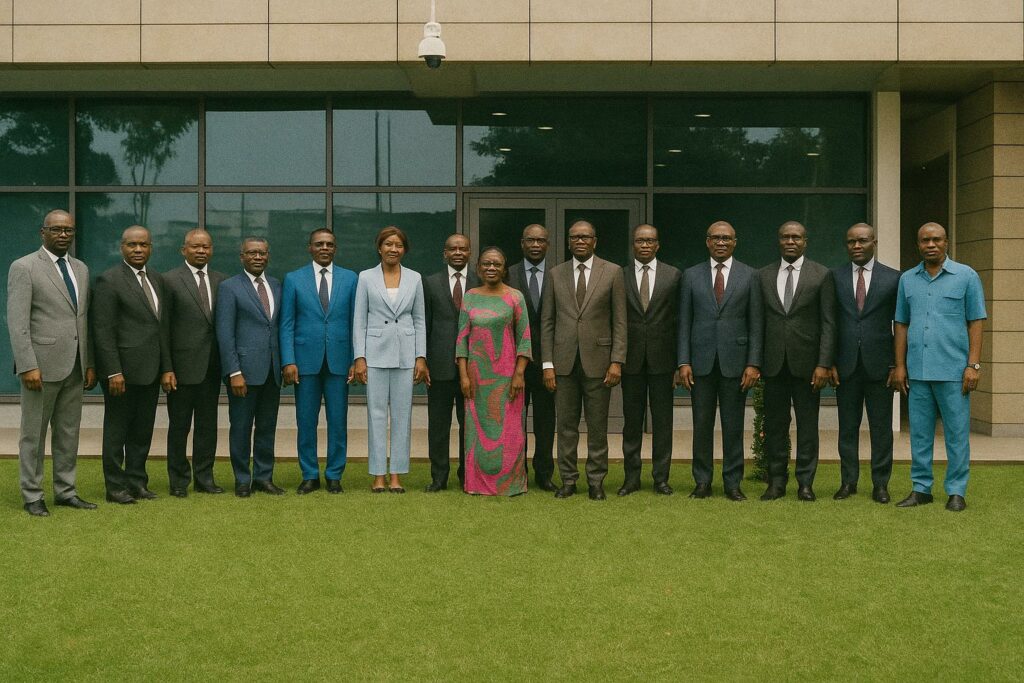Budget Revision Reflects Expanding Reform Ambitions
In a climate of heightened fiscal vigilance, the steering committee of the Programme to Accelerate Institutional Governance and Reforms (Pagir) endorsed on 8 July an upward revision of the 2025 work-plan and budget to CFAF 3 592 708 350. The 17 % increase, compared with the originally projected CFAF 3 069 655 000, materialises the decision of the Ministry of Economy, Planning and Regional Integration to incorporate additional reform-driven activities. These include the recasting of the national investment charter, preparatory work for the 2027-2031 National Development Plan and the formal adoption of a country manual on procedures for World Bank-financed projects.
Government officials insist the additional resources are not merely an accounting exercise but a response to more complex governance imperatives. “We are not in the business of swelling figures; we are in the business of measurable impact,” stressed Gervais Bouiti Viaudo, Special Adviser to the Prime Minister, minutes after the vote of approval. Such language echoes Brazzaville’s consistent narrative of prudent expansion rather than indiscriminate spending (Ministry of Economy 2024).
Strategic Role of the Steering Committee in Policy Alignment
The steering committee, chaired by Mr Bouiti Viaudo, occupies an increasingly strategic niche in Congolese public-policy architecture. By subjecting each additional franc to a test of coherence with national and partner indicators, the body acts as an early-warning system against policy drift. Its deliberations are attended by senior officials from the Ministry of Finance, the Presidency’s Coordination Unit and representatives of the World Bank’s Country Office, ensuring that technical targets remain aligned with political realities.
During the Brazzaville session the committee scrutinised preliminary results destined for the next Performance-for-Results (PforR) verification. The discussion focused on domestic-revenue mobilisation and social-sector disbursement ratios, both of which underpin disbursement-linked indicators under the US$100 million World Bank operation approved in 2022 (World Bank 2023). By locking reforms to concrete indicators, the committee seeks to shift the national conversation from intentions to outcomes.
World Bank’s PforR Lens and the Quest for Efficient Procurement
Pagir is financed through the Bank’s PforR window, a modality that centres on verified results rather than traditional expenditure tracking. This architecture explains the committee’s keen interest in procurement timelines. A dedicated paragraph of the new budget targets the recruitment of a cabinet to professionalise staffing for project-management units, a move expected to accelerate contract execution and mitigate fiduciary risks.
Several observers note that procurement efficiency in Congo-Brazzaville has improved in recent cycles, yet bottlenecks persist, particularly at decentralised levels. The forthcoming country manual for World Bank-financed projects is designed to harmonise disparate practices and shorten the average time between tender launch and contract signature. According to a senior official at the Direction Générale des Marchés Publics, the manual will provide a common reference that “reduces grey zones where delays and cost overruns incubate” (ACI 2024).
Navigating Fiscal Pressures and Diversification Imperatives
The endorsement of a larger Pagir envelope unfolds against a backdrop of tightening budget space. The International Monetary Fund projects overall fiscal pressure to hover around 17 % of GDP in 2024-2025, a level that compels Brazzaville to allocate resources with surgical precision (IMF 2024). Critics sometimes question whether additional allocations risk widening the deficit, yet government planners argue that Pagir constitutes an investment in fiscal self-reliance, not a cost centre.
Diversification remains the leitmotif of economic-policy debates. By revisiting the investment charter, authorities hope to refresh incentives for non-oil sectors, notably agribusiness and telecommunications. Preliminary drafts circulating within the Ministry of Economy point to streamlined licence procedures and a recalibrated tax-incentive framework, reflecting lessons from peer economies in the Gulf of Guinea. In parallel, the Pagir budget reserves funds for analytical work feeding into the next National Development Plan, a document expected to set diversification benchmarks measurable in export-share terms.
Looking Ahead: National Development Planning and Investment Climate
Next on the steering committee’s calendar is the mid-term evaluation scheduled for early 2025, which will coincide with the release of the first drafts of the 2027-2031 National Development Plan. Officials hope that the synchronisation will allow direct translation of Pagir-generated diagnostics into national-planning targets, thereby avoiding the historical disconnect between reform programmes and overarching policy frameworks.
Diplomatic observers in Brazzaville interpret the committee’s recent tone as a signal that Congo-Brazzaville intends to stay the course on public-finance modernisation despite volatile oil receipts. By anchoring reforms to World Bank and IMF benchmarks, the authorities seek to reassure bilateral partners and private investors that the trajectory remains credible. Whether heightened ambitions can be met within the agreed timelines will depend on political resolve as much as technical capacity, yet the latest budget decision suggests that the administration is willing to stake additional resources on success.

